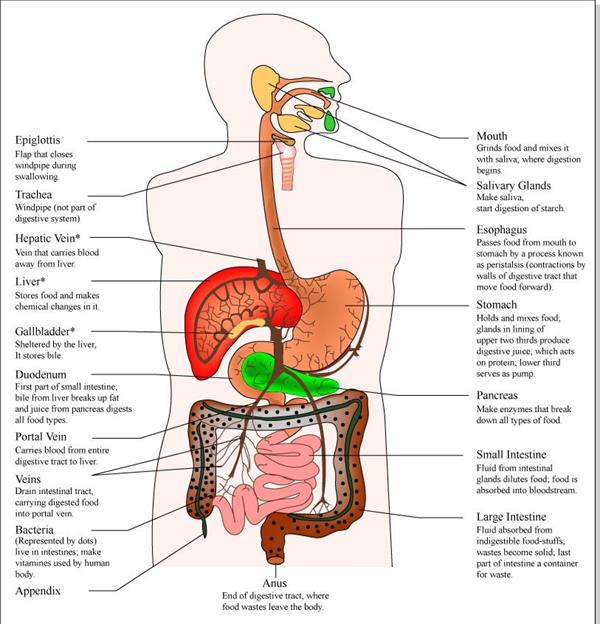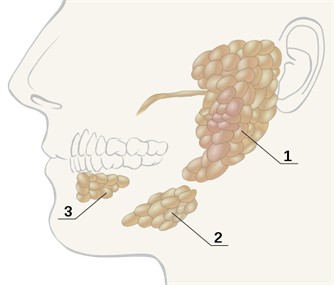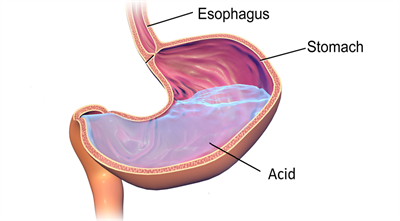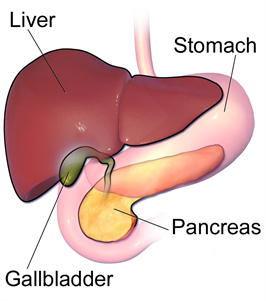
PUMPA - SMART LEARNING
எங்கள் ஆசிரியர்களுடன் 1-ஆன்-1 ஆலோசனை நேரத்தைப் பெறுங்கள். டாப்பர் ஆவதற்கு நாங்கள் பயிற்சி அளிப்போம்
Book Free DemoThe human digestive system is made up of the alimentary canal or the gastrointestinal tract and the various glands associated with it. The function of this system is to convert the complex food substances into simple forms and absorb the digested food.
The alimentary canal
The alimentary canal is a tubular organ of about \(9\) metres long. It consists of a series of hollow organs from the mouth to the anus. It includes the,
- Mouth or Buccal cavity
- Pharynx
- Oesophagus or food pipe
- Stomach
- Small intestine
- Large intestine
- Anus

Alimentary canal or Gastrointestinal tract - Digestive system
Mouth
It is a cavity that consists of the lips, tongue and teeth. It is the place where the mechanical and chemical digestion of the food begins. The digestion process occurs with the help of teeth, tongue and saliva.
Pharynx
It is also known as the throat. It is the part of the alimentary canal that receives food from the mouth.
Oesophagus
It is a muscular tube that connects the mouth and stomach. As it is a muscular tube, it can contract or expand to allow the passage of food.
Stomach
It is a sac-like or pouch-like organ that stores, mixes and, digests food with the help of the gastric juice it produces. The gastric juice consists of mucus, enzymes, and hydrochloric acid.
Small intestine
It is a long tube about six metres long and is the place where most of the chemical digestion occurs. When the food is present in the small intestine, all the nutrients of the food are absorbed into the bloodstream.
Large intestine
The food that is properly not digested in the small intestine reaches the large intestine, and the water in this food is absorbed here. The large intestine also absorbs certain important vitamins produced by the bacteria, which harbours the large intestine.

Digestive system
Digestive glands
- Salivary glands
- Gastric glands
- Liver
- Pancreas
- Intestinal glands
Salivary glands
These are the glands that produce saliva which is a liquid that lubricates food so that it becomes easy for swallowing. Saliva contains certain antibacterial agents and the enzyme salivary amylase, which breaks down starch.

Salivary glands
Gastric glands
It is a gland found in the linings of the stomach and secretes the gastric juice that helps in the digestion of proteins. As this juice contains certain acids, it kills the bacteria.

Acid in the stomach
Liver
It is an organ through which the blood-carrying nutrients from the small intestine pass. Here, the blood is filtered, and the complex nutrients are broken down. Liver also plays a role in the synthesis of proteins, conversion of glucose to glycogen and also production of a bile that helps in the digestion of fats and some vitamins.
Pancreas
These are organs that play an essential role in the conversion of food into fuel. It secretes a digestive juice that contains an enzyme involved in the breakdown of carbohydrates, fats, and proteins.

Digestive glands
Intestinal glands
It is a gland that is found in between the small intestine and large intestine. These glands are involved in the secretion of digestive enzymes.
The overview of the digestive system:
Reference:
https://www.flickr.com/photos/mitopencourseware/3693598243
https://upload.wikimedia.org/wikipedia/commons/thumb/2/26/Salivary_glands_numbered.svg/512px-Salivary_glands_numbered.svg.png
https://upload.wikimedia.org/wikipedia/commons/0/07/Blausen_0428_Gallbladder-Liver-Pancreas_Location.png